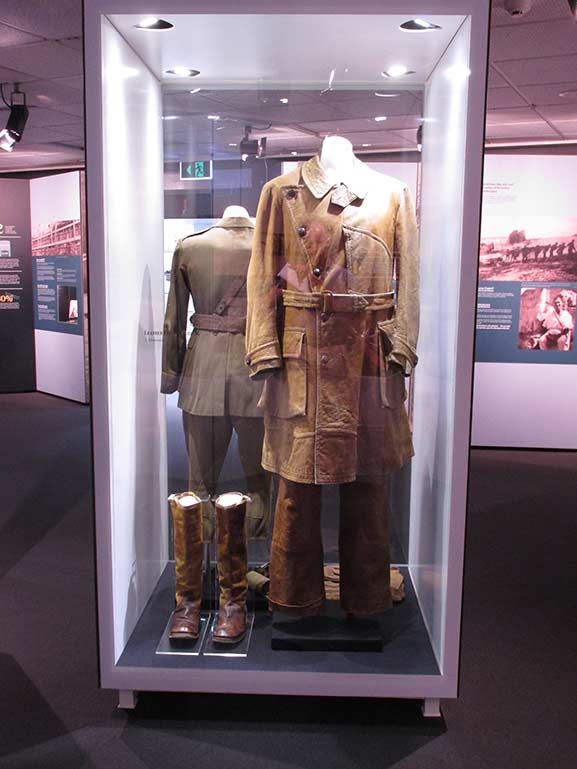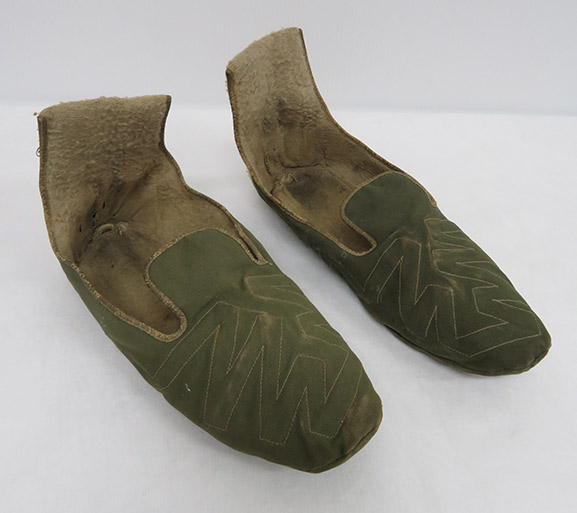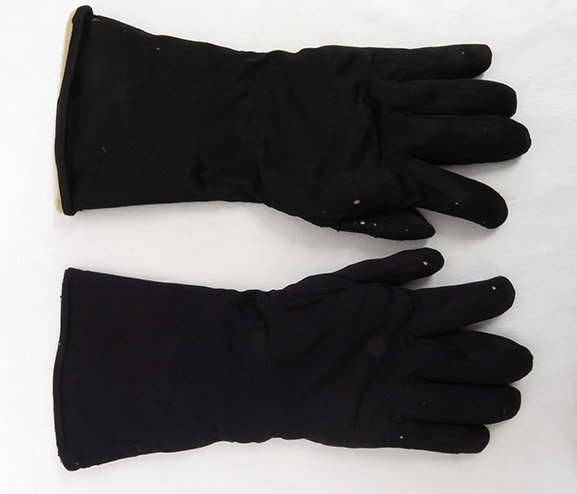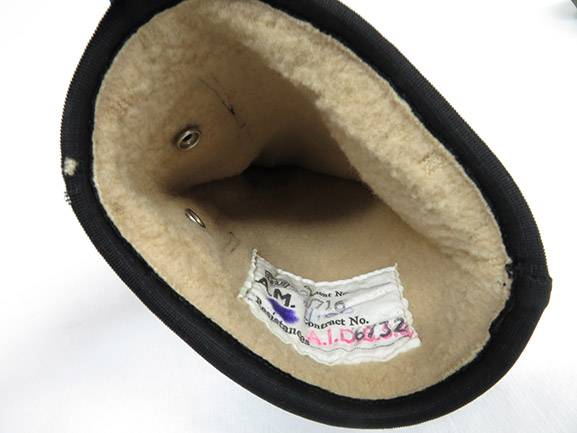Late autumn; when leaves that were recently picture-perfect are clogging every drain in sight, and you’re forced to walk through small lakes that form around them. It’s the time of year when you quickly remember that damp footwear brings a misery all of its own – sure, you’re not going to get Trench Foot in the space of a day, but it’s hard to overstate the restorative power of dry socks. Imagine then, as your shoes impart a certain odour while drying by the heater, the unparalleled awesomeness of heated slippers. A threat worse than soggy toes saw air crew using similar technology as much as a century ago.
Wrapping up against the cold has always been essential for aviators. In the early days of powered flight, where journeys where short, at low altitudes, and often in ideal conditions, serviceable layers of tweed and leather used for motoring would generally do the job. As aircraft became more powerful, and the popularity of flying increased, leading retailers produced more specialised equipment such as aviator’s suits, leather flying coats and fleece-lined boots. Such items -still based on motoring clothing – were worn by pilots and air crew when war broke out in 1914.

Development of multi-layered Sidcot suits from 1916 was welcomed, but cold still posed a problem, particularly at altitude. New aircraft capable of flying at greater heights saw pilots operating regularly at 10,000-15,000 feet – and often higher, with outside temperatures below minus 35 degrees C. Hands and feet were particularly prone to frostbite in these conditions, and lack of dexterity from cold could prove fatal when operating an aircraft. Any moisture in clothing would freeze at altitude, requiring the pilot to get dressed at the last minute so as not to dampen the clothes with perspiration.
One way to combat the elements was with… elements, and electrically-heated clothing was introduced by the Royal Naval Air Service (RNAS) in late 1917. Initially, this was an electrically-heated waistcoat worn under the usual uniform tunic and flying coat, with heated gloves and sole inserts. Power came from a windmill-powered generator that was mounted on the exterior of the aircraft, but with no voltage regulator, the pilot could suffer burns when entering a dive. Wires in the items were also prone to breaking, so warmth was not guaranteed.
Despite its eccentricities, electrically-heated clothing was one way to target the cold, and air forces continued to develop systems into World War Two. The clothing falls into two categories: electrically-heated garments, which contain heating elements, and electrically-wired clothing – items that do not heat up but are wired to carry current to the heated garments. The Air Force Museum has examples of each type in our collection.

The 1941 version of the Sidcot suit was wired to support electrically-heated accessories. The suit was connected to the aircraft power source via Bakelite plugs, and wiring along the sleeves and arms carried the current to attachment points at the respective cuffs. The suits were compatible with electrically-heated gloves, sockettes and full-length liners of Type D, or later.


This pair of Type G electrically-heated sockettes was worn by Flight Sergeant E. Howard on thirteen operations over Germany – including on the night of 9 April 1945 when Howard and the crew abandoned their Halifax during a night raid on the city of Stade. As a rear-gunner on night raids, Howard was yet to benefit from improvements to aircraft heating systems, and would still require additional warmth.
The khaki bootees are lined with felt, and would have been worn inside flying boots, over normal socks. The top stitching that can be seen on the exterior indicates the location of heating elements, which cross each foot and extend beneath the sole. The elements terminate at two rear connection points where the sockettes would attach to corresponding terminals on the flying suit.


Similarly, these heated silk glove liners would attach to terminals on the flying suit’s sleeve cuffs. The heating elements begin at the knuckles and extend along the fingers. Leather gauntlets would be worn over the liners to keep the heat in.


This wired ‘Irvin’ jacket is an example of the earlier ‘RAE system’ of wired and heated clothing, developed by the Royal Aircraft Establishment. With its reversed sheep-skin construction and multiple draft excluders, it is the same as other ‘thermally-insulted’ Irvin garments that the RAF had introduced in 1937 – with the addition of wiring for heated accessories. Heated gloves would attach to the jacket by means of plug connectors, and heated boots would attach to similarly-wired trousers, which also connected to the jacket. Adapters later became available to make the RAE system compatible with Type D (and later) equipment.
Although prone to inconsistencies that prevented it from being the perfect solution, electrically-heated clothing gives an example of technology being used to address specific challenges that flying posed. The same technological advancement ultimately brought improvements to cockpit enclosure, insulation and aircraft heating systems, and rendered heated clothing obsolete.






